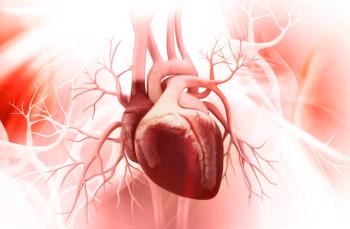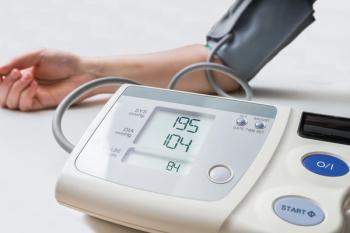
- Vol 68 No 08
- Volume 68
- Issue 08
How heavy menstrual bleeding impacts iron deficiency and anemia
Reproductive-aged women and girls, as well as any children they may bear, are impacted by iron deficiency and anemia, according to a recent review.
An expert review of the relationship between heavy menstrual bleeding (HMB), iron deficiency (ID), and ID anemia (IDA) published in the American Journal of Obstetrics and Gynecology found that this pervasive set of conditions often negatively impact the lives of reproductive-aged girls and women, as well as children they may bear.
“Although the World Health Organization and related funding organizations recognize that anemia is a highly prevalent worldwide contributor to disability disproportionally affecting reproductive-aged girls and women, in our opinion, [the organization is] missing a core root cause, if not the dominant cause: ID related to menstrual bleeding that exceeds a woman’s dietary intake,” said senior author Malcolm Munro, MD, FRCSC, FACOG, a clinical professor of obstetrics and gynecology at David Geffen School of Medicine at UCLA in Los Angeles, California.
Munro told Contemporary OB/GYN that he and the other review authors believe that most clinicians are surprised by these relationships, even those who work in the field. “Our medical research and practice worlds are often siloed, so the gynecologist seeing a woman with HMB may not realize that she may become a pregnant patient whose fetus is conceived and developed in an ID environment,” he said.
Similarly, the obstetrician may not realize that the growth-restricted baby and the peripartum hemorrhage might be linked to unreplenished IDA related to HMB. Likewise, the pediatrician frequently does not connect the intellectual impairment or autism spectrum to the ID in pregnancy, according to Munro.
“Moreover, a psychiatrist treating a 20-something [patient] with attention-deficit disorder or attention-deficit/hyperactivity disorder doesn’t know that the root cause of the problem might have been treatable HMB and related ID in the patient’s mother,” he said.
The symptom of HMB may be present in up to 50% of reproductive-aged girls and women, most of whom are iron deficient and may not even realize that what they are experiencing is abnormal.
“Clinicians must recognize the prevalence of HMB,” said Munro, cofounder and immediate past chair of the International Federation of Gynecology and Obstetrics Committee on Menstrual Disorders and Related Health Impacts. “Even in developed countries, the HMB-ID issue is amenable to correction with safe, inexpensive, and effective remedies. While not a panacea for autism spectrum and other psychiatric disorders, policies that address this issue are urgently needed and likely to be effective.”
Munro advocates that ob-gyns assume leadership roles in confronting the HMB-ID challenge. “Proactively identifying women with HMB, routine testing of ferritin levels and fasting transferrin saturation—realizing that IDA is a late, not an early, consequence of ID—and then seeking and treating the cause of HMB while simultaneously treating the ID will do much to address the problem,” he said.
The recognition of these issues by professional societies such as the American College of Obstetricians and Gynecologists, American Medical Association, and American Academy of Pediatrics is also needed. “But such recognition is only the first step in a path that leads to changes in policy, particularly by implementing routine screening of nonpregnant girls and women for ID,” Munro said.
Developing and maintaining comprehensive ID, IDA, and HMB databases to support real-world, evidence-based research are also a worthwhile pursuit. The goal of these actions is for the iron-replete, nonpregnant woman to become an individual whose offspring conceive in an environment more conducive to normal neurodevelopment, thus “preparing the child for a more productive life ahead, rather than a burden on society,” Munro said.
Disclosure
Munro serves as a consultant to AbbVie Inc; American Regent, Inc; Daiichi Sankyo Co, Ltd; Hologic, Inc; Karl Storz Endoscopy-America, Inc; Myovant Sciences; Pharmacosmos A/S; CSL Vifor; and Shield Therapeutics plc. He also receives indirect research funding from AbbVie and Pharmacosmos.
Reference
Munro MG, Mast AE, Powers JM, et al. The relationship between heavy menstrual bleeding, iron deficiency, and iron deficiency anemia. Am J Obstet Gynecol. 2023;229(1):1-9. doi:org/10.1016/j.ajog.2023.01.017
Articles in this issue
over 2 years ago
Feedback: Valuable to give and receiveover 2 years ago
Vulvovaginal disease in the inpatient setting: Part 2over 2 years ago
Assessment and treatment of opioid use disorder in pregnancyover 2 years ago
Obstetrics and gynecology through the looking glassover 2 years ago
Contraceptive care during the COVID-19 pandemicover 2 years ago
Does COVID-19 vaccination impact ovarian reserve?over 2 years ago
Hormone therapy and gastroesophageal reflux disease riskover 2 years ago
Maternal ADHD and postpartum depression riskover 2 years ago
Early hysterectomy and cardiovascular disease riskover 2 years ago
Mifepristone for treating adenomyosisNewsletter
Get the latest clinical updates, case studies, and expert commentary in obstetric and gynecologic care. Sign up now to stay informed.










